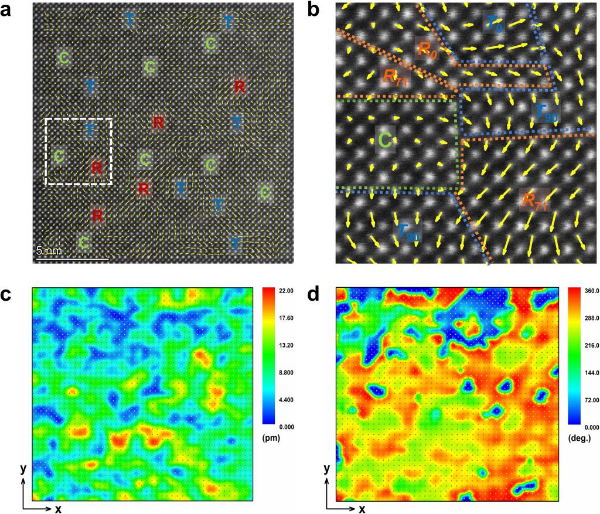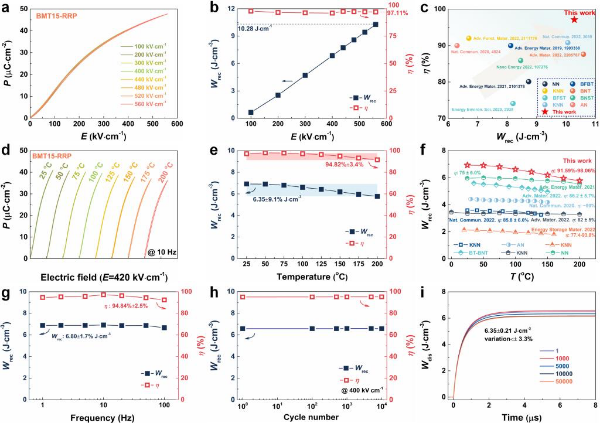Achievement in ultra-low energy loss lead-free high-temperature dielectric ceramic capacitor made by XJTU research team
Energy storage ceramic capacitors, as core components of pulse power electronics applications, play a decisive role in the miniaturization and integration of advanced power electronic devices. However, challenges like low energy density, poor energy efficiency, and temperature instability significantly hinder the practical application of dielectric ceramic capacitors.
To address these challenges, Professor Zhou Di's team from the School of Electronic and Information Engineering at Xi'an Jiaotong University (XJTU) introduced Bi (Mg1/3Ta2/3) O3 (BMT) end member into (Bi0.5Na0.5)0.7Sr0.3TiO3 (BNST) relaxor ferroelectric ceramics and designed a heterostructure with R-phase and T-phase polar nano-regions (PNRs) embedded in a C-phase paraelectric matrix, as shown in Figure 1.

Figure 1. Heterostructure of Multi-state PNRs in BMT15-RRP Ceramics.
By modulating the proportion of R-phase and T-phase nano-domains, the team made domain switching as smooth as possible, minimizing polarization hysteresis while maintaining maximum polarization. The results show that as the chemical complexity of the relaxor system increases, disorder in polarization intensifies. The induced multi-state PNRs can significantly optimize energy storage performance and reduce temperature sensitivity. Additionally, due to a uniform and dense organizational structure and exponential decrease in average grain size, the repeated rolling process (RRP) enhances the key parameter of breakdown field strength (Eb), allowing the system to maintain an ultra-high Wrec value of 10.28 J·cm-3 and an efficiency (η) of 97.11%, superior to other reported lead-free systems, especially in terms of very low energy loss. Moreover, the ceramic demonstrates high performance and stability in a broad temperature range (25-200℃), with a Wrec value of around 6.35±9% J·cm-3 and efficiency (η) at approximately 94.8%±3%, as shown in Figure 2. These results indicate that this multi-component design can be a viable model for developing next-generation high-performance energy storage applications, potentially sparking widespread interest in material design across various fields.

Figure 2. The energy Storage Characteristics of BMT15-RRP Ceramics under Various Test Conditions (Electric Field, Temperature, Frequency, and Cycle Number).
The research results, titled A High-Temperature Performing and Near-Zero Energy Loss Lead-Free Ceramic Capacitor, were published online in the internationally renowned journal Energy & Environmental Science (IF=32.5). The sole corresponding institution is XJTU, the first author is Li Da, a Ph.D. student at the School of Electronic Science and Engineering of the Faculty of Electronic and Information Engineering, and the co-corresponding authors are Professor Zhou Di and Assistant Professor Xu Diming from the School of Electronic Science and Engineering and Professor Wang Dong from the Frontier Institute of Science and Technology. This work, supported by the National Natural Science Foundation of China and the Shaanxi Provincial International Cooperation Project, benefited from extensive testing and characterization support from the International Center for Dielectric Research at XJTU.

